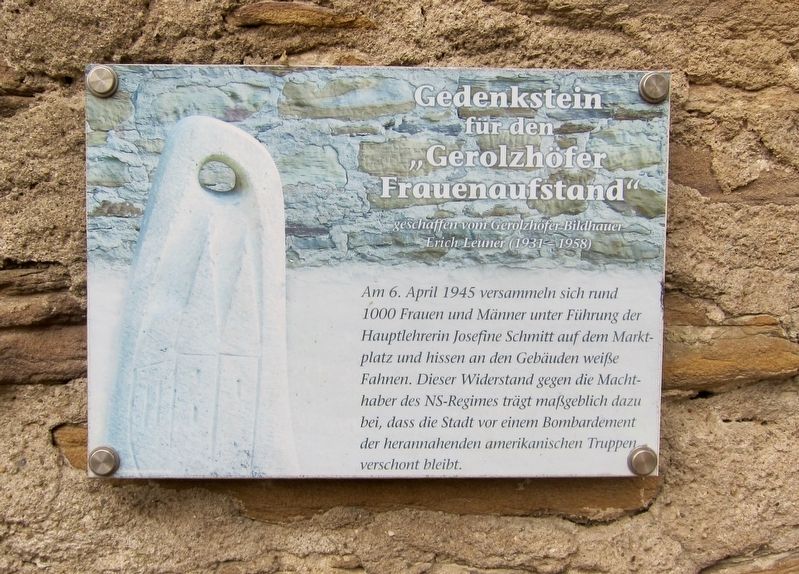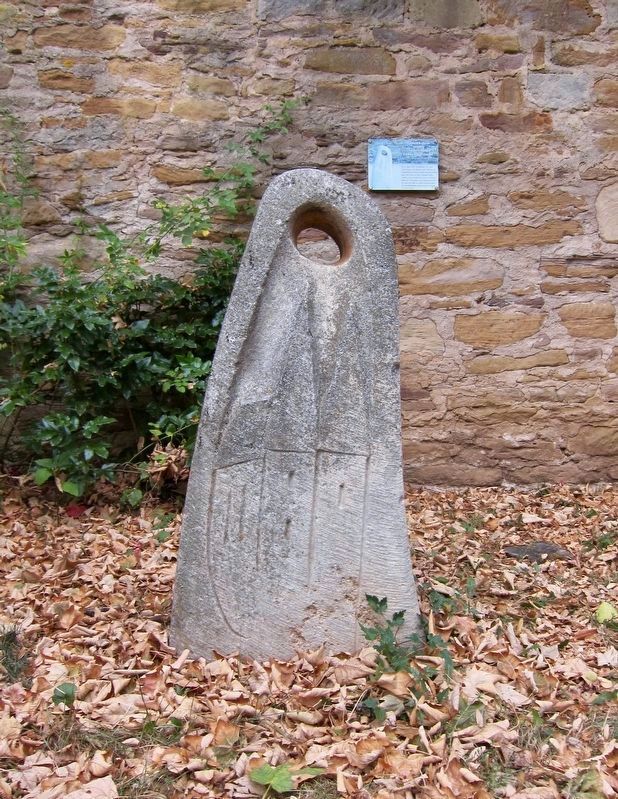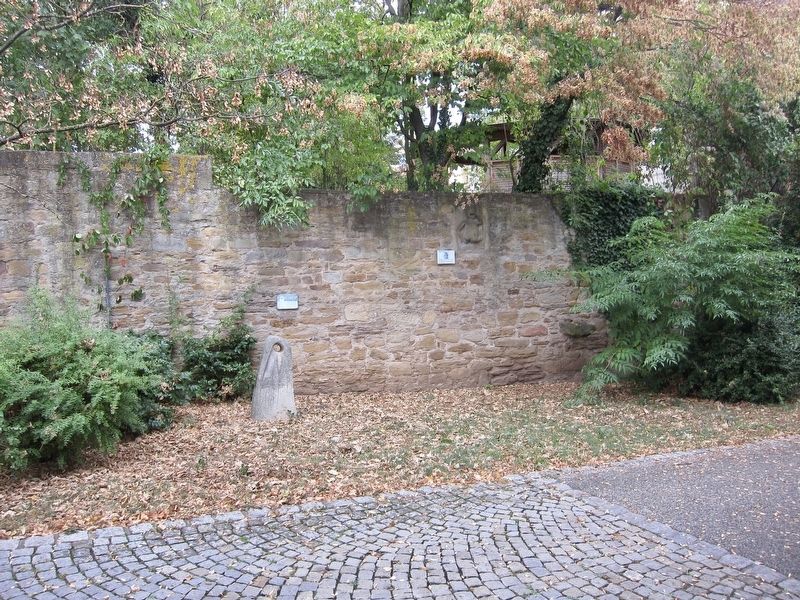"Gerolzhöfer Frauenaufstand" / The Gerolzhofen "Womens' Revolt"
geschaffen vom Gerolzhöfer Bildhauer Erich Leuner (1931-1958)
-
Created by the sculptor Erich Leuner (1931-1958) of Gerolzhofen
"The Women's Uprising of Gerolzhofen refers to a demonstration of 800 to 1,000 women and children and some men on 6 April 1945 against the local, National Socialist leadership. The demonstrators called for the hoisting of a white flag as a symbol of the city's surrender to the American army, which was about to destroy the city should resistance be offered. A demonstration in numbers this large number against the National Socialist regime was rare and life-threatening.
The rest of the article is too long to translate and present here, but several additional points are worth noting, namely that: the American 7th Army had already captured Wuerzburg (April 4th) and were now already in nearby Volkach, and that while the Nazi leadership had instructed the populace to fight "to the last stone", much of that leadship had fled. Consequently, this "revolt", was not so much against the Nazi leadership itself so much as the pointlessness of a poorly armed and protected populace fighting the American 7th Army by themselves. The instigators of the revolt were known to the authorities, and some were captured, and all were sentenced to death, but events overtook the situation before any of the instigators could be executed, with the war effectively being over in that area of Germany within a week of the uprising. Thus the uprising could be interpreted as an act of liberation - an exceptional event, as it were, but not one that was based upon principals of resistance to the evils of the National Socialist regime. (Submitted on October 4, 2018, by Andrew Ruppenstein of Lamorinda, California.)
Topics. This historical marker is listed in these topic lists: War, World II • Women. A significant historical date for this entry is April 6, 1945.
Location. 49° 53.995′ N, 10° 20.948′ E. Marker is in Gerolzhofen, Bayern (Bavaria), in Schweinfurt. Marker is at the intersection of Grabenstrasse and Schulgasse, on the right when traveling
west on Grabenstrasse. Touch for map. Marker is in this post office area: Gerolzhofen BY 97447, Germany. Touch for directions.
Other nearby markers. At least 8 other markers are within walking distance of this marker. Spottfratze, ca. 1450 (a few steps from this marker); Bürgerspital / Municipal Hospital (within shouting distance of this marker); The Beadle’s Tower (within shouting distance of this marker); Altes Rathaus / The Old City Hall (about 120 meters away, measured in a direct line); Spital Gate (about 120 meters away); Parish Church (about 120 meters away); Baroque Crucifixion Sculpture (about 120 meters away); The Former Adminstrative Building (about 150 meters away). Touch for a list and map of all markers in Gerolzhofen.
More about this marker. The marker is mounted on the exterior of the south side of the city wall, easily seen when walking along the pedestrian path that follows the wall.
Also see . . . Frauenaufstand von Gerolzhofen (Wikipedia, in German). There is currently little available in English on the internet on this event. Wikipedia (in German) does have a somewhat detailed entry, with the lede translated thusly:
Credits. This page was last revised on January 28, 2022. It was originally submitted on October 4, 2018, by Andrew Ruppenstein of Lamorinda, California. This page has been viewed 158 times since then and 12 times this year. Photos: 1, 2, 3. submitted on October 4, 2018, by Andrew Ruppenstein of Lamorinda, California.


